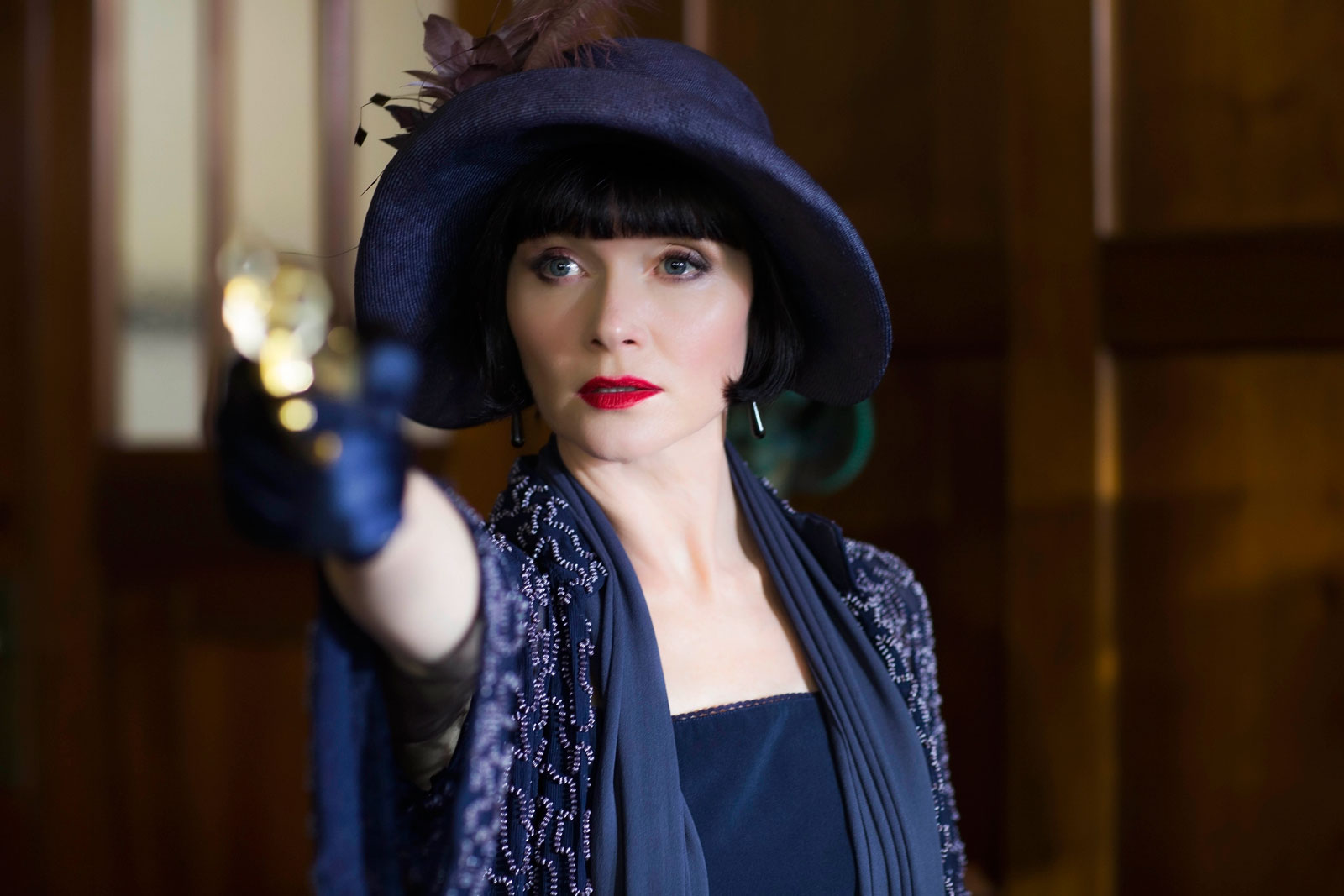I first drifted into the Father Brown and Miss Fisher television series in 2018, while under the effects of pain medication and postsurgical malaise. Even though my family and I are safely housed, and my own case of Covid-19 has been relatively mild, I see the shadow of prolonged illness all around us, and I’ve instinctively returned to my cozy mysteries.
The traditional cozy is a soft-boiled whodunit featuring an amateur sleuth operating within an intimate community, mostly outside the traditional police force. The sleuth has a contact on the force; their relationship is familiar but often testy. Each episode features one-off characters, affected by a murder, around whom buzz the core characters, who solve the murder. Like most generic narratives, the stories pit good against bad, with little nuance.
The framing of the shots, the dialogue, and even the plots are incidental; these are retreads of the classic Greek plays, archetypes lumbering around onscreen alongside modern clichés. A daily erase and reset; the warmth of a few static relationships—these are the genre’s seductive promises.
The productions leave little residue in the mind; watching them feels restorative, like a nap. In regular life, when serious illness seems far away, I’m not so strongly attracted to such basic inanity. But the cozies’ most alluring feature is a world in which the consequences of death last no more than an hour, and death itself appears soothingly make-believe.
Upon finding a murder victim, a secondary character will very gently hold two fingers against the supine victim’s jugular and, less than two seconds later, declare the victim dead. No resuscitation attempts are ever made; poisoning and other bloodless causes of death are customary.
When she arrives at the scene, Miss Fisher will immediately crouch next to the body and pick up a small object that reveals an important clue; Father Brown will slowly kneel, unfold his purple silk stole, and place it around his neck to perform last rites.
In every episode of his show, Father Brown takes confession from someone involved with the murder, often accepting information that will remain protected by Catholic sacrament despite the police force’s furious attempts to extract it. At one point, the confessor will ask Father Brown whether he’ll cooperate with the cops, and Father Brown will respond somberly that he cares only about the confessor’s soul.
In every episode of her show, Miss Fisher has a dalliance with a different man—the handsome one-armed winemaker in the one about the grief-mad war widow; the handsome Jewish scholar in the one about his father’s burglary-prone bookshop; or the handsome Chinese silk importer in the one about Melbourne’s opium trade.
Miss Fisher wears bespoke frocks, jewels, headwear, and full makeup, mugging and posing, demonstrating her quick eye and general sexual arousal. Father Brown’s long cassock never gets caught in his bicycle chain.
I ratchet up the banality by watching the episodes multiple times; each time, there’s less to notice. This freedom frees up part of my mind to wander, and in fact rewatching a Father Brown episode inspires a mental state that is often more conducive to writing than just sitting down and trying to have an idea.
There is room in my life for spectating masterpieces, and there is also room for consuming mindless entertainments, which require not just a different level of engagement but a different flavor of it entirely. The very freedom to ruminate on other subjects is borne of the fact that Miss Fisher is not asking me to believe in her. After all, she can’t really show up at a dock in Melbourne in broad daylight, in a white duster and heels, steal unseen onto the ship that houses the girls stolen from the Catholic home for the “fallen and friendless,” survive the resulting shoot-out, rescue all the girls, and appear in the final scene without a scratch.
I enjoy engaging shallowly with a cozy while doing the passive, wondering work that is the greater part of processing emotions or writing books. These shows throw me into a meditative state, deadening the willful, working mind so that the deeper sense-making part of it is invited awake and active. Cozies flood my awareness with a surface experience and force me to find something interesting in my mental deep storage that, in a more stimulated state, I wouldn’t have gone looking for.
I should add that turning on a cozy hardly throws me headlong into a fugue state in which I immediately produce a chapter of a novel or finish dealing with some long-simmering psychic pain; the process is gradual and unpredictable. I know that if I ever start treating the cozies like homework, they’ll lose their talismanic power, so I watch them and await their mysterious byproducts: a return to an emotional baseline and pages of prose that, if I’m lucky, won’t resemble the entertainments that called upon it to be born.
Advertisement
I watch my cozies, expecting nothing, because it feels good to lie in bed, gaze into the laptop display, and pay partial attention to the parade of costumes, accents, and unlikely murder weapons. I’d watch these shows even if I couldn’t pretend it was a virtuous or worthwhile pursuit. I watch them because they are smokescreens; they render death utterly unreal, and it feels good to spend forty-five minutes not having to think about what is most assuredly coming for me, too.
This is part of “My Quarantine,” a continuing NYR Daily series in which our contributors share how they’re spending their time while social distancing.




